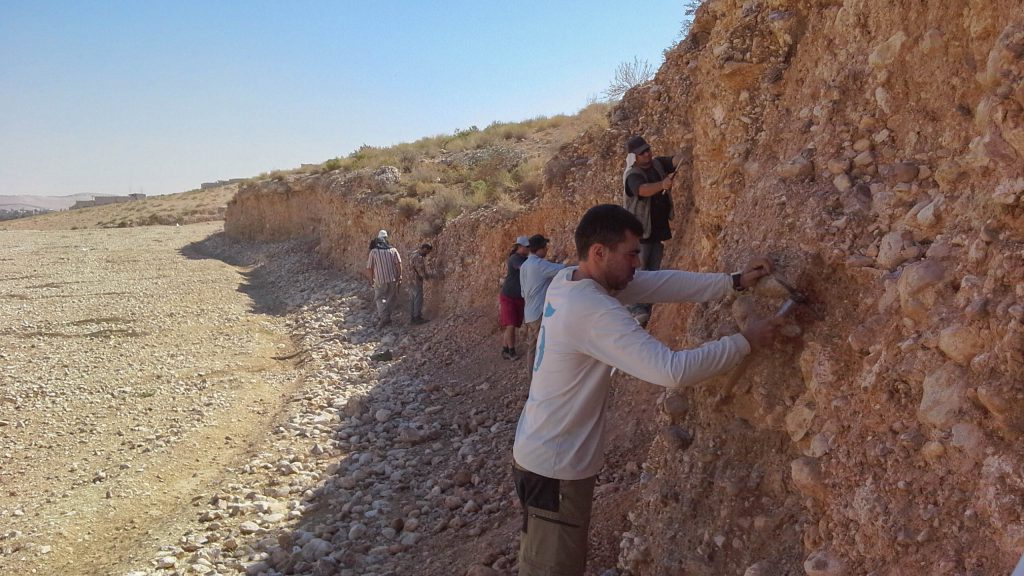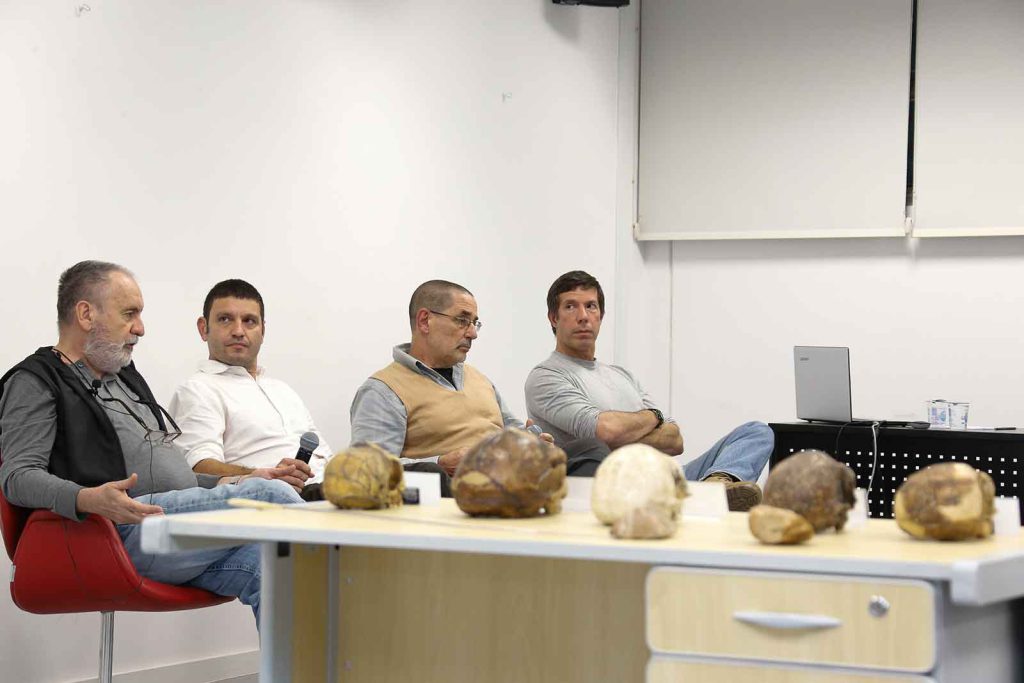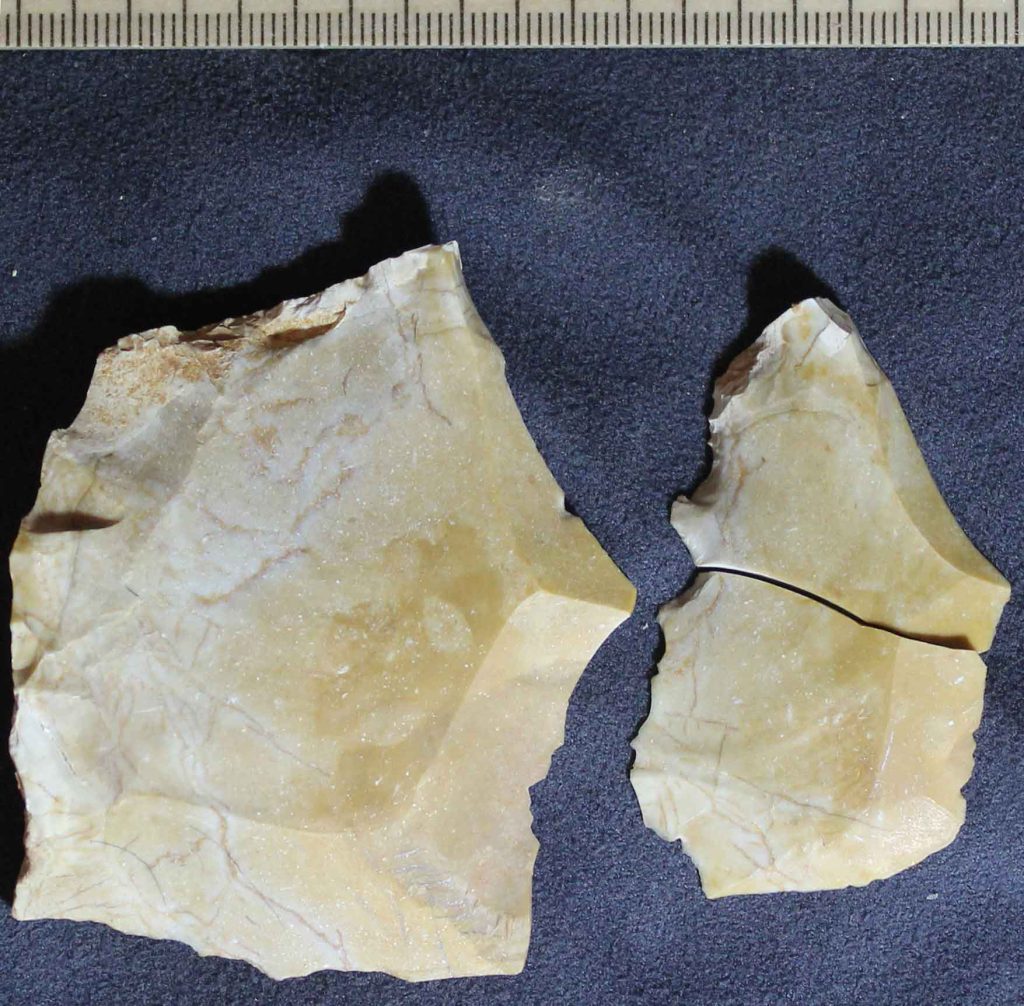Should the Story of Homo’s Dispersal Out of Africa Be Rewritten?

Giancarlo Scardia was in Jordan in 2013 as the Syrian Civil War ground on. He recalls seeing refugees gathered in giant camps and military aircraft moving toward the border.
But Scardia, a geologist based at São Paulo State University in Brazil, wasn’t there to observe the conflict—his interest was in a much older story. Buried within layers of sediment in the Zarqa Valley in northern Jordan was a large cache of chipped rocks.
Scardia and his colleagues, having analyzed these artifacts, argue that they are rudimentary tools used by early humans, crafted and discarded around 2.5 million years ago. If they are right, we may need to rethink which hominin species made the first forays out of the African cradle—and when.
The general consensus for decades has been that Homo erectus—an upright, long-legged species—was among the first hominins (or species closely related to modern humans) to leave Africa. Scientists presume members of this species traveled through the natural corridor of the Levant, a region along the eastern edge of the Mediterranean, around 2 million years ago.
Scardia’s study, published in the September issue of Quaternary Science Reviews, suggests a far earlier exit. It proposes that hominins capable of tool creation may have been on the doorstep of Asia some 500,000 years earlier. That claim helps explain the puzzling evolution of a hominin species found in Indonesia, as well as a contentious group of skulls found in Georgia. It also feeds into a broader discussion about which Homo species came from Africa and which evolved outside of that continent.
Scardia’s team of Italian and Brazilian researchers excavated a 30-meter high fluvial terrace, a stepped geological formation carved out by a river. The water source would have supported a variety of local wildlife, and, potentially, humans.
“We found a perfect moment where geology was recording the paleoenvironment,” Scardia says. The Zarqa Valley is littered with artifacts; people have found more advanced tools such as hand axes in lower, younger fluvial terraces, along with fossils of mammoths and other extinct fauna. “It has been occupied by hominins for millions of years,” he says.
Underpinning the excavation site was a layer of dark volcanic basalt, dated to around 2.5 million years ago, establishing the chronological base. Scardia and his colleagues used three methods to date the sediments where the tools were found above this base. (Remnants of a mammoth and an auroch, an early ancestor of cattle, were also among those layers.)
The team began with a technique called paleomagnetism, which measures the alignment of minerals in relation to the Earth’s periodically flipping magnetic poles. The researchers then used two radioisotopic dating methods to refine the search: measuring the decay of both potassium into argon and uranium into lead atoms to estimate the age of the sediment layers.
By triangulating all three methods, Scardia and his colleagues found that the earliest tools had settled into their place in the geological record about 2.48 million years ago. Of that age, he says, “there is no doubt.”
Without fossil evidence—something notoriously hard to come by in this tectonically active region—it’s difficult to say conclusively who made the tools. The oldest fossil evidence for H. erectus is from around 1.9 million years ago, making it unlikely that this species made the tools found in the Zarqa Valley.
Scardia and his team are writing another paper to explain the implications of the findings, but they have some preliminary speculations. Their hypothesis is that the tools may have been wrought by Homo habilis—an ancient species of the Homo family alive during the early Pleistocene.
Researchers have generally thought H. habilis, whose body appears better made for swinging from trees than walking on foot, was incapable of such a distant migration out of Africa. But H. habilis was certainly capable of making stone tools.
Finding such an ancient collection of artifacts is “a great discovery,” says archaeologist and paleoanthropologist Debbie Argue at the Australian National University.
Argue sees the new study as complementing several ideas in the field. For one, researchers have discussed the possibility of hominins leaving Africa before H. erectus for decades. For another, she notes, “their results fit into an emerging pattern of early stone tool sites in Africa and China.”
Stone tools recently found in Algeria date to 2.4 million years ago, suggesting dispersal into the Levant could have happened around this time too. Other artifacts found last year in China are about 2.1 million years old.
In addition, Argue, an expert on Homo floresiensis, sees the paper as contributing to theories surrounding that mysterious hominin species. Discovered in 2003 on the island of Flores in Indonesia, scientists think H. floresiensis may have lived between about 60,000 and 100,000 years ago. This diminutive hominin had a cranium roughly the size of a chimpanzee’s and stood—on relatively large feet—just 3 1/2 feet tall.
Scientists initially hypothesized that this hominin was either a pathologically dwarfed modern human or that H. erectus arrived in this part of Asia, settled on Flores, and evolved into a smaller species as a result of poor food and isolation. (Extinct dwarf elephant species, excavated on the island, support this claim.)
“Their results fit into an emerging pattern of early stone tool sites in Africa and China,” says archaeologist Debbie Argue.
But a more recent explanation is that an unknown hominin was a common ancestor of both H. floresiensis and H. habilis. This hypothesis proposes a pre–H. erectus migration out of Africa, which the new paper from Scardia and his colleagues supports, Argue notes. That earlier migration also opens up the possibility that some hominin species evolved after leaving the African continent.
Robin Dennell, a Paleolithic archaeologist from Sheffield University, says the dating looks sound, though he isn’t convinced that the stones are tools. “The last place that I would want to search for early stone artifacts would be a high-energy … fluvial deposit,” he explains. The stones, he notes, may have simply chipped as they were thrown around in the water over time.
To rule out this possibility, Scardia and his colleagues discounted any tools they thought may have chipped naturally, only selecting those that showed repetitive, unidirectional marks that would suggest deliberate hominin shaping. Dennell suggests a way to strengthen the case for the Zarqa pieces would have been to “record every single stone in the excavations where artifacts were claimed and record the size, weight, flake scars, etc., in the same way.” He says, “Overall, I am not convinced.”
Argue is more positive. The team “comprises an impressive set of specialists in the very disciplines needed in this sort of work,” she says. “I have no criticisms.”
The study also adds fuel to a larger discussion in the field over the paradigm of Africa being the cradle of all Homo species. Scardia and his colleagues suspect that a pre–H. erectus hominin could have traveled to Asia and there evolved into new species such as H. floresiensis or the equally mysterious Denisovans found in Siberia (and more recently, in Tibet).
The team points to the finding of H. habilis–like skulls in the Caucasus Mountains in Georgia, nearly 1.8 million years in age, as evidence for this migration and subsequent evolution. “Africa created H. habilis, and H. habilis then existed in Asia. What did it do there? Produce other species,” Scardia says, supporting the idea that Asia was another pivotal cradle of human evolution.



































